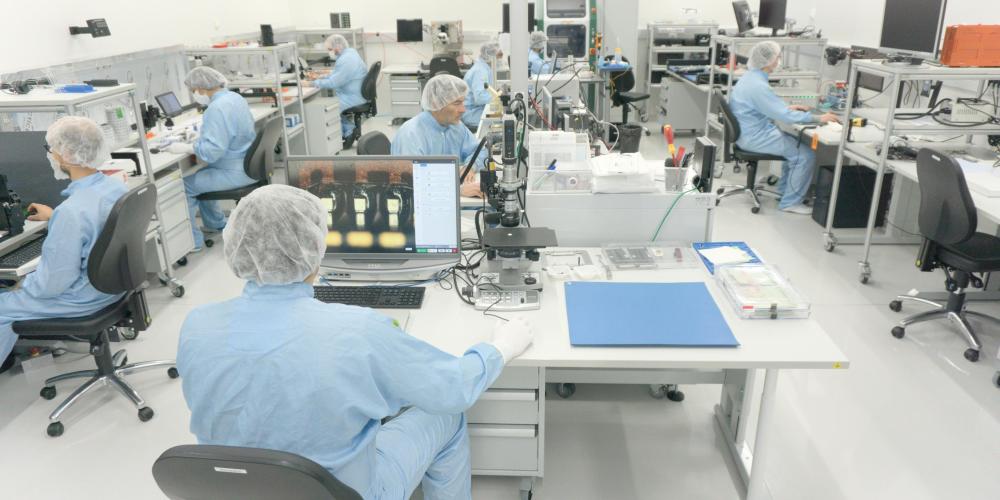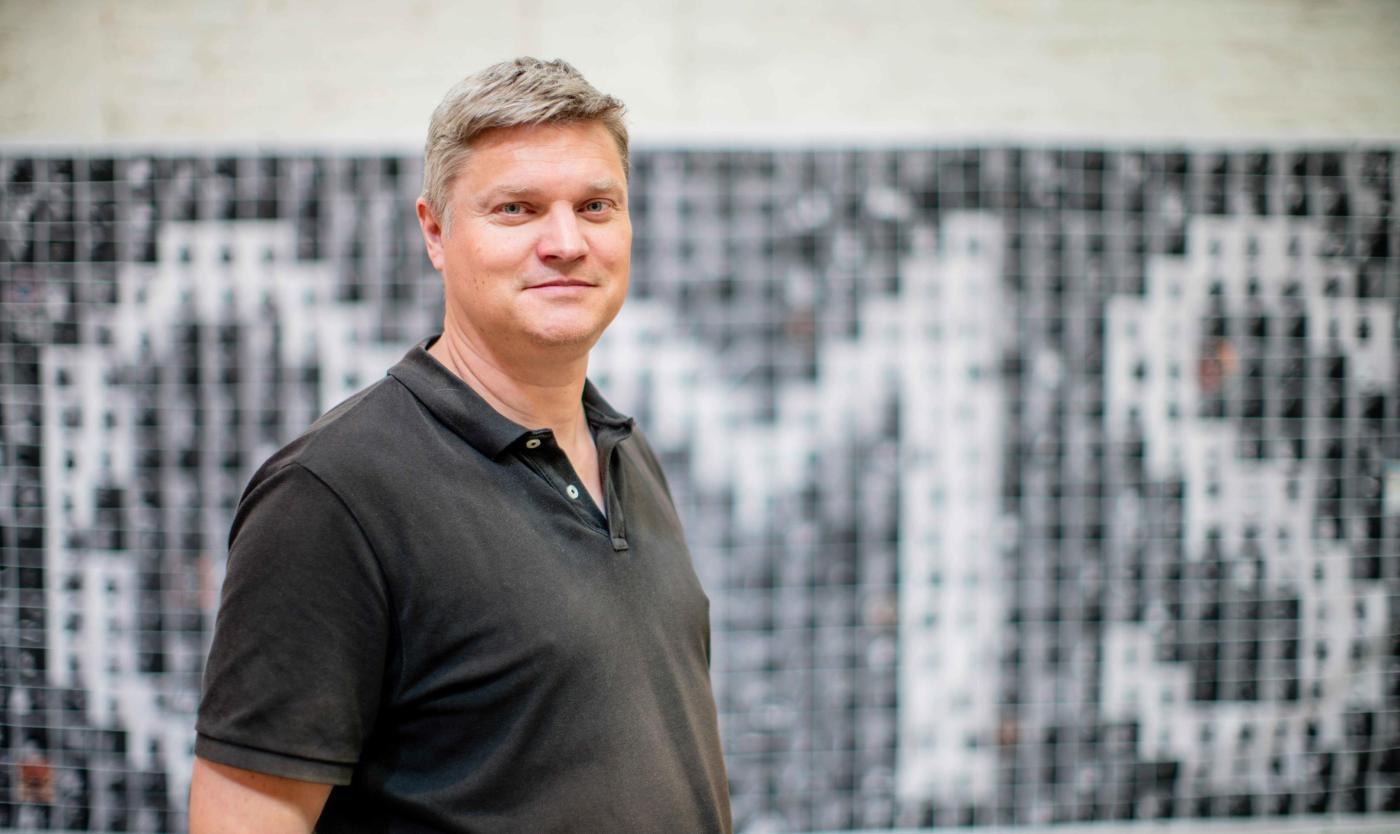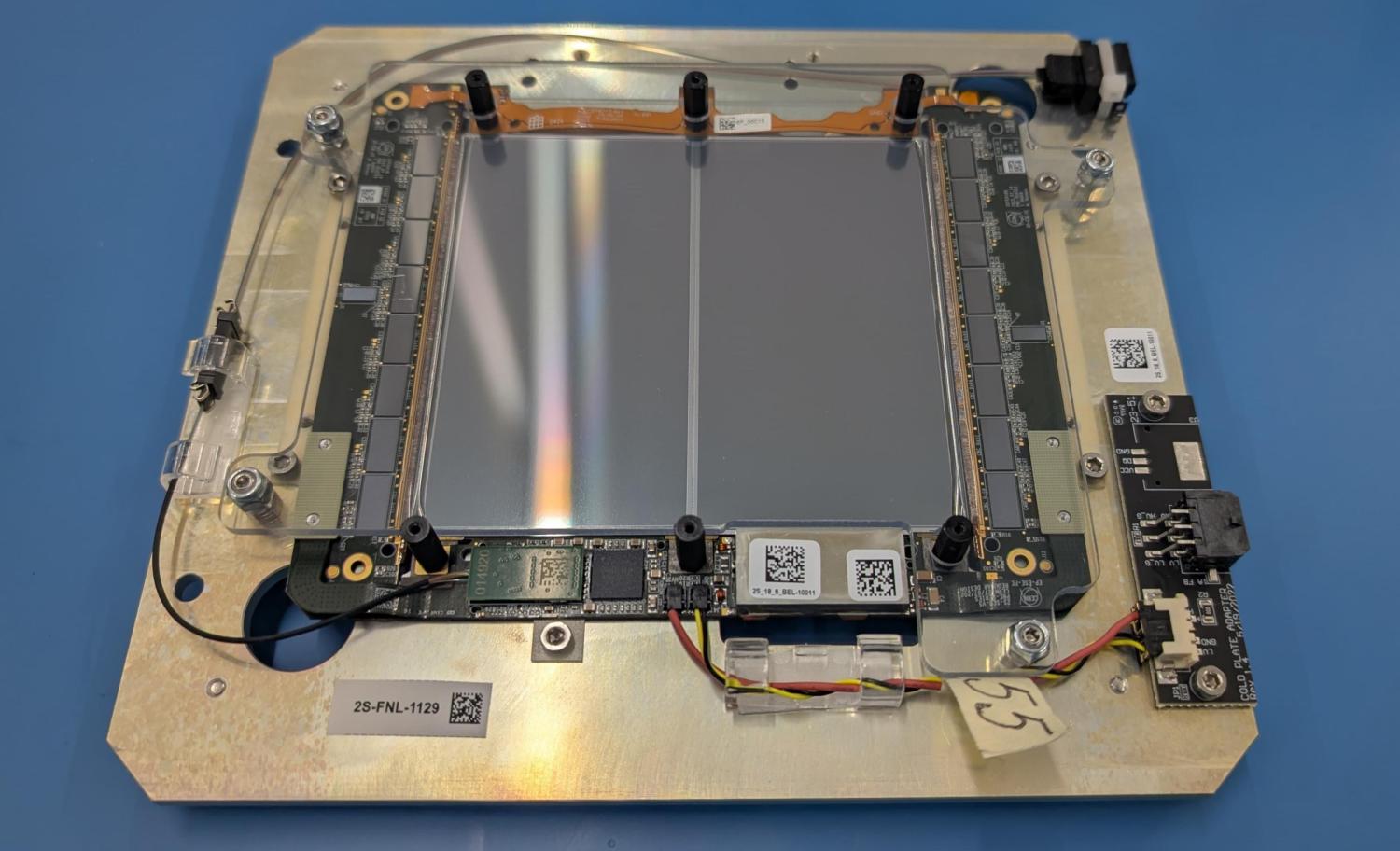
One of the most advanced components of CERN’s next-generation particle detector is being constructed at the Vrije Universiteit Brussel (VUB). In a cleanroom on the VUB campus in Etterbeek, production has just begun on 1,600 modules that will soon form the heart of the new detector used in the CMS experiment. The CMS — or Compact Muon Solenoid Detector — is one of the flagship projects at the European research centre in Geneva. Professor Michael Tytgat of the VUB, who also serves as director of the Interuniversity Institute for High Energy (a joint initiative of the VUB and ULB), is playing a leading role in the project.
The VUB is working on the project in collaboration with four other Belgian universities: ULB, UCLouvain, Ghent University, and the University of Antwerp. Over the next two years, researchers, engineers and technicians from across Belgium will join forces at the Interuniversity Institute for High Energy (IIHE) at VUB to build this highly complex system. The project is supported by EWI (Flemish Department of Economy, Science and Innovation), the FWO (Research Foundation – Flanders), and the FNRS (National Fund for Scientific Research), which together are investing more than €12 million in this unique scientific partnership.
40 million collisions every second
The new modules are part of what’s known as the “tracker” — a central component of the CMS detector that meticulously records the paths of thousands of particles generated during high-speed collisions inside CERN’s particle accelerator, the LHC. These collisions occur at a staggering rate of 40 million times per second, as physicists push the boundaries of our understanding of the universe.

Michael Tytgat, directeur van het Inter-university Institute for High Energies (IIHE)
“We’re showing that fundamental research doesn’t have to be some distant, abstract concept”
But the current tracker detector is nearing the end of its life. In 2026, the accelerator will shut down for four years — a window for a major upgrade that will significantly boost its capabilities. With the new tracker — including the modules being built in Brussels — the CMS experiment will be equipped to handle an unprecedented volume of data from 2030 onwards.
“We’re not just building technology here,” says Professor Michael Tytgat (VUB), director of the IIHE. “We’re helping to construct an instrument that will allow us to search for answers to the biggest questions about the universe. The fact that this is happening in Brussels — alongside just a handful of other leading institutions worldwide — and that it involves students, researchers and technicians from five Belgian universities, really is exceptional.”
VUB as a construction site for fundamental science
Belgium’s leading role in such a major international project is no coincidence. The country has played a prominent part in the CMS experiment for decades. From the outset in the 1990s, Belgium — including the VUB — has been closely involved in CMS, contributing significantly to the construction of the original detector. Belgian scientists also played a key role in the 2012 discovery of the Brout-Englert-Higgs boson, which led to a Nobel Prize for Belgian physicist François Englert. Today, the Belgian CMS team still includes around one hundred researchers.
The production of the new CMS tracker modules is taking place at the Interuniversity Institute for High Energy (IIHE), a collaboration between physicists at the VUB and ULB. In recent years, a cleanroom was specially set up there to carry out this highly specialised task — and the first modules are already complete.
“Our cleanroom at the IIHE on the VUB campus is currently a vital part of an international experiment,” says Professor Tytgat. “We’re showing that fundamental research doesn’t have to be something remote or abstract. What we’re building here is quite literally part of a global quest for new physics.”

A completed sensor module for the detector in the particle accelerator.
Science doesn’t stop at the Higgs boson
Since the discovery of the Brout-Englert-Higgs boson, the CMS experiment has continued to generate new data that challenge the Standard Model of particle physics. As recently as March, researchers observed a puzzling phenomenon: an unexpected overproduction of top-quark pairs — fleeting “molecules” of two heavy quarks that, according to theory, shouldn’t exist in such quantities.
Findings like these underscore the vital importance of ongoing investment in fundamental research — and show that such investment can also yield tangible, ground-breaking scientific achievements right here in Belgium.